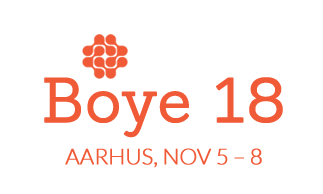Who Should Attend
This class is designed for corporate or commercial digital leaders, developers and analysts that are, or plan to be, involved in Web and Mobile projects. Anyone working on agile projects and concerned about delivering high value digital solutions, including individuals that will gather user requirements or end-users themselves, will also benefit from attending.
-
Project Managers who are responsible for delivering value with digital tools and software.
-
Project Leaders who need to know proven steps for quickly identifying key solutions to solve critical business issues.
-
UX Designers who need to know how and what deliverables to create to support fast moving design sprints.
-
Product Managers who need to deliver products that succeed in the market
-
Software Developers who want to learn how to effectively work with user experience teams on agile projects and design sprints.
-
Interaction Designers who are responsible for managing and implementing successful designs
-
Business Analysts responsible for documenting requirements and designing optimal user experiences
What You Will Learn
This two day class for managers, developers, end-users, interaction designers, and analysts explains how to apply put design sprints into action to deliver business solutions in weeks vs. months.
Attendees will learn how to:
-
Choose a problem suited for a design sprint Master how to conduct a design sprint How to plan for and setup a design sprint
-
Get the right people involved How to build user journeys
-
Apply structured decision making
-
Align key stakeholders on a common goal
-
Create fast, simple prototypes
-
Evaluate and measure design spring success
Day 1 Monday, November 5th 2018
1
Introduction to Design Sprints
• What is a design sprint?
• When and how to initiate
• Who participates?
• Typical outcomes
2
Choosing a project
• Optimal project size
• Gaining executive alignment
• Identifying the problem to solve
3
Obstacles to success
• Managing scope
• Maintaining focus
• Managing scope
• Creating actionable deliverables
4
Planning a design sprint
• Setting the stage
• Ice breaker exercise
• Developing your plan
• Getting user involvement
5
Setting up room and location
• Setting up for collaboration
• Supplies
6
Securing management support
• Aligning to business objectives
• External and internal audiences
• Setting expectations
• Setting decision making rules
7
Presenting your Sprint Plan
• Identifying the problem space
• Setting the schedule
• Creating a clear and actionable plan
Day 2 Tuesday, November 6th 2018
8
Aligning the team on key goals and objectives
• Key business opportunity
• Key differentiators
• Setting measurable objectives
9
Identifying key areas to solve
• Key user goals
• Key tasks
• Key objects / interactions
10
Defining the problem to solve
• Creating Journey Maps
• Aligning on possible solutions
• Creating rapid design options
11
Identifying solutions
• Competitor reviews
• Identifying best practice solutions
• Creating affinity diagrams
• Identifying how solution will be built
12
Choosing a solution
• Presenting solutions
• Facilitating options
• Voting to gain consensus
• Aligning on a solution
13
Rapid Prototyping
• Goals of the prototype
• Tools for prototyping
• Creating your prototype
14
Validating your solution
• Testing with users
• Testing low-fidelity prototypes
• Remote user testing
• Capturing user feedback
15
Presenting your findings
16
Aligning on key observations
• Creating highlight videos
• Aligning key stakeholders
• Creating an actionable plan to move forward
17
Conclusion
• Moving forward
• Implementing design sprints in your organization

